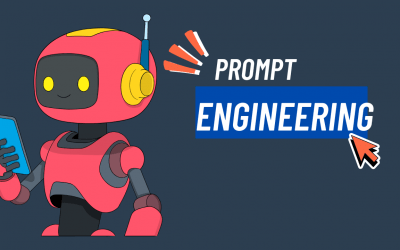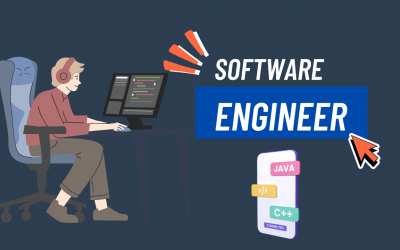Introduction
The landscape of mobile app development has evolved dramatically in the past decade. From single-platform solutions to sophisticated cross-platform frameworks, the coding languages behind apps dictate not only performance but also scalability and user experience. Selecting the right language for app development isn’t just a technical decision—it’s a strategic one. This article dives deep into the most influential programming languages shaping the app development space today.
Native App Development Languages
Swift for iOS
Swift is Apple’s modern, intuitive programming language designed specifically for iOS, macOS, watchOS, and tvOS. It offers type safety, memory management, and seamless integration with Apple’s ecosystem. Swift’s syntax is concise, and its performance is comparable to that of compiled languages like C++. For developers aiming for fluid animations and optimal hardware utilization, Swift is often the de facto choice.
Kotlin for Android
Kotlin has largely replaced Java as the preferred language for Android development. Endorsed by Google, Kotlin reduces boilerplate code and enhances readability, while maintaining full interoperability with existing Java libraries. It supports functional programming paradigms and null safety, making Android app development cleaner and less error-prone.
Objective-C and Java: Legacy but Still Relevant
Though considered legacy languages, Objective-C (for iOS) and Java (for Android) still power many existing applications. These languages offer robust libraries and mature development ecosystems. In enterprises with long-standing codebases, these languages remain integral, particularly in maintenance and gradual modernization efforts.
Cross-Platform Development Languages
Dart with Flutter
Flutter, backed by Google, uses Dart as its primary language. Dart enables reactive programming and compiles to native ARM code, providing near-native performance on both iOS and Android. Flutter’s single codebase and custom UI engine allow for expressive, pixel-perfect apps, making it a compelling choice for startups and rapid development cycles.
JavaScript with React Native
React Native, developed by Meta, lets developers build apps using JavaScript and React. Its “learn once, write anywhere” philosophy allows for shared logic across platforms while still using native components under the hood. With a massive ecosystem and active community, React Native is a powerful option for developers with web experience transitioning to mobile.
C# with Xamarin
Xamarin, a Microsoft technology, uses C# and the .NET framework to build cross-platform applications. Xamarin compiles to native code, ensuring performance, while offering access to native APIs. It’s especially attractive to teams already invested in the Microsoft ecosystem.
Web Technologies for App Development
Progressive Web Apps (PWAs)
PWAs blur the line between web and native apps. Built using HTML, CSS, and JavaScript, they function within browsers but mimic app-like behavior—including offline functionality, push notifications, and home screen installation. For businesses prioritizing reach and cost-efficiency, PWAs offer a compelling alternative to native apps.
HTML, CSS, and JavaScript in Hybrid Apps
Frameworks like Ionic and Cordova enable hybrid app development using standard web technologies. These apps run in embedded webviews and offer a quick path to both platforms. While performance may not match that of native apps, the reduced development overhead makes this approach attractive for MVPs and content-driven apps.
The Role of TypeScript in Modern Front-End Frameworks
TypeScript enhances JavaScript by adding static typing, which aids in catching errors during development. It’s widely adopted in frameworks like Angular and React, making code more maintainable and scalable. When used in mobile web or hybrid app development, TypeScript can significantly improve the developer experience and reduce runtime bugs.
Backend Languages Supporting Mobile Apps
Node.js for Real-Time Experiences
Node.js, powered by JavaScript, excels at building fast, scalable network applications. It’s particularly suited for real-time use cases like chat apps and live notifications. Its non-blocking, event-driven architecture allows mobile backends to handle high concurrency with efficiency.
Python for Rapid Prototyping and AI Integrations
Python is beloved for its simplicity and vast ecosystem. In mobile app development, it’s often used for backend services, machine learning features, or rapid prototyping. Frameworks like Django and Flask speed up backend development, while libraries like TensorFlow and PyTorch power AI-driven apps.
Go and Rust for Performance-Critical Mobile Backends
Go (Golang) is known for its simplicity and concurrency capabilities, making it ideal for high-performance APIs. Rust, on the other hand, offers memory safety without garbage collection, which leads to lightning-fast and secure backends. For apps handling massive traffic or sensitive data, these languages provide a rock-solid foundation.
Factors to Consider When Choosing a Language
Platform Compatibility
Targeting iOS, Android, or both? Your platform goals heavily influence the language choice. Native apps yield best-in-class performance but require maintaining separate codebases. Cross-platform solutions reduce development time at the cost of some platform-specific features.
Performance vs. Development Speed
Swift and Kotlin offer high performance but may lengthen the development cycle. Cross-platform languages like Dart and JavaScript can significantly speed things up, especially for MVPs and quick iterations.
Community Support and Scalability
A vibrant developer community ensures abundant resources, regular updates, and third-party integrations. Languages like JavaScript, Python, and Swift benefit from large ecosystems that streamline learning and troubleshooting. Additionally, languages with strong scalability traits—like Go or Node.js—support long-term growth as user bases expand.
Conclusion
The selection of a coding language for app development is a high-impact decision with long-term consequences. Whether building sleek native apps, agile cross-platform solutions, or robust backends, aligning language choice with technical goals and business priorities is crucial. As app ecosystems continue to evolve, staying abreast of language trends and capabilities ensures that developers and businesses alike remain competitive and future-ready.
Other Articles
The Art and Science of Prompt Engineering: Crafting the Future of AI Interaction
Beyond Keywords – Defining Prompt Engineering We stand at the precipice of a new paradigm in human-computer interaction. The rise of sophisticated Large Language Models (LLMs), such as GPT-4 and its contemporaries, has shifted our communication with technology from...
What is a Software Engineer
The Architects of Digital Reality Software engineers constitute the fundamental workforce orchestrating our technologically mediated existence. These professionals transmute abstract concepts into functional applications that permeate every facet of contemporary life....
Angular TypeScript: A Comprehensive Guide to Modern Web Development
Introduction to Angular TypeScript Integration Angular's symbiotic relationship with TypeScript represents a paradigmatic shift in modern web development methodologies. This powerful amalgamation emerged from Google's recognition that large-scale applications require...




